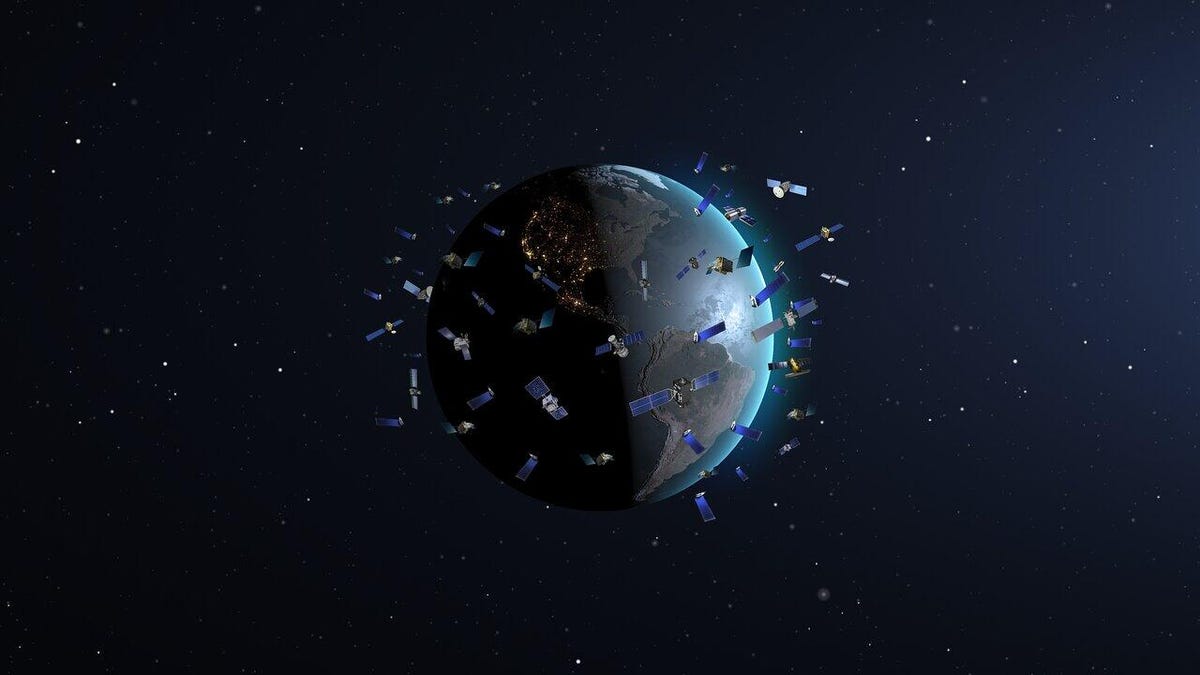Satellites like SpaceX's Starlink will 'fundamentally change' astronomy in a bad way
A report suggests several ways to address the problem but finds no simple solutions.

The Satcon1 report outlines six approaches that might reduce the harm done to astronomical observations.
Astronomers say growing mega-constellations of satellites like SpaceX's Starlink are inevitably going to change astronomy and may even alter the appearance of the night sky for casual observers on the ground worldwide.
That was the central takeaway of a report released Tuesday that also outlined a handful of strategies for reducing the impacts to science as thousands or perhaps tens of thousands of new satellites launch in the coming years.
"No combination of mitigations will eliminate the impact of satellite constellations on optical-infrared astronomy," Connie Walker of the National Science Foundation's NoirLab told reporters and scientists on a Zoom call Tuesday.
The report comes out of the Satellite Constellations 1 (aka Satcon1) workshop, held from June 29 through July 2 by NoirLab and the American Astronomical Society and attended virtually by over 250 astronomers, engineers, commercial satellite operators and others.
"Existing and planned large constellations of bright satellites in low-Earth orbit (LEOsats) will fundamentally change astronomical observing at optical and near-infrared (NIR) wavelengths," the 22 page-document (accompanied by 108 pages of technical reports) begins.
Particularly affected will be upcoming space observatories like Vera C. Rubin Observatory under construction in Chile. It has a very wide view of the sky.
"Rubin Observatory and the giant 30-meter telescopes coming online in the next decade will substantially enhance humankind's understanding of the cosmos," said Satcon1 co-chair Jeff Hall from Lowell Observatory in Flagstaff, Arizona.
Hall explained such projects can't be conducted in space beyond the orbit of mega-constellations.
The brightness and interference of the small satellites designed to provide global broadband access have surprised scientists and operators like SpaceX, sending both scrambling for solutions.
The report outlines six approaches that might reduce the harm done to astronomical observations. They include setting an altitude limit for the satellites, darkening their surface or using sunshades like SpaceX's VisorSat, orienting them to reflect less sunlight, removing the impacts during image processing, and working with operators to avoid pointing telescopes at the satellites.
Only one suggested approach in the report has any hope of eliminating the impacts entirely: "Launch fewer or no LEO (low-Earth orbit) sats. However impractical or unlikely, this is the only option identified that can achieve zero astronomical impact."
"There is no place to hide," said Phil Puxley of the Association of Universities for Research in Astronomy.
Hall noted that major constellation operators SpaceX, Amazon and Oneweb all participated in the SatCon1 workshop. SpaceX has a significant head start on its competition. With over 600 Starlink satellites now in orbit, and imminent plans to add hundreds more, most of the impacts seen so far have come from Starlink satellites.
SpaceX didn't immediately respond to a request for comment.
"In this whole process, SpaceX has set an excellent example of a collaborative effort between astronomy and industry to manage this problem and we certainly hope to see other operators follow suit," said Hall.
Part of Tuesday's briefing explained efforts of some astronomers to purposefully observe the satellites to figure out ways to mitigate their impact and see how fixes like VisorSat are working. Lori Allen of NoirLab explained that more data is needed on VisorSat, but that DarkSat, a SpaceX experimental satellite with a less reflective coating, was observed to be about two times fainter than other Starlink satellites.
"Even though we're still at an early stage of understanding and addressing the threats posed to astronomy by large satellite constellations, we have made good progress and have plenty of reasons to hope for a positive outcome," said American Astronomical Society President Paula Szkody from the University of Washington, who participated in the workshop.
Satcon2 is already planned for 2021.

